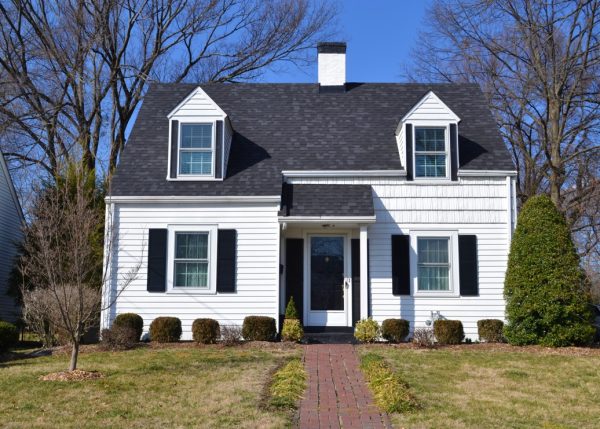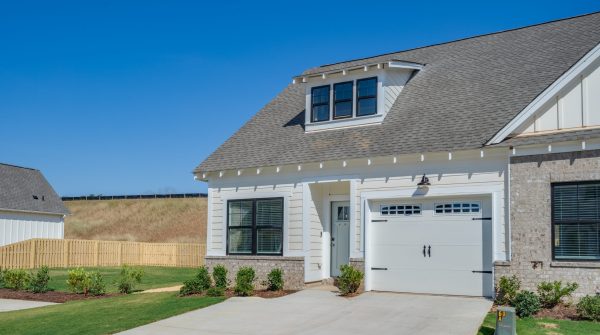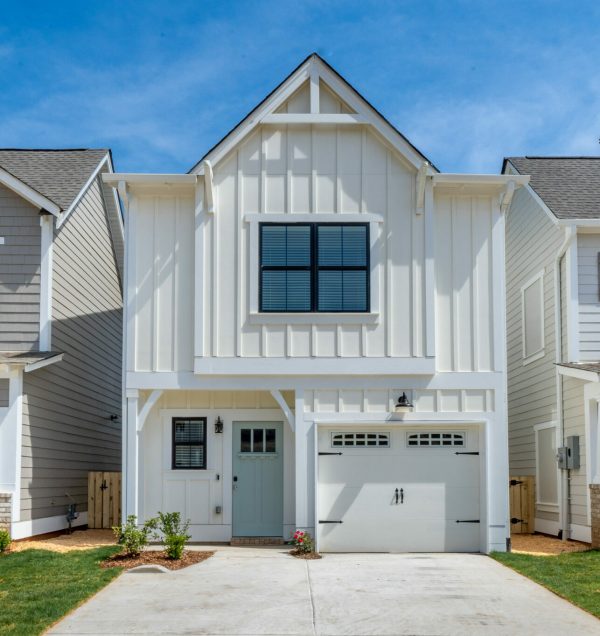I read in a New York Times article recently about the trend of building tiny houses – between 400 and 600 sq. ft. This wasn’t built-for-rent cottages or backyard Accessory Dwellings units (ADUs)– but rather new for sale construction. These houses were built to combat rising land cost, construction cost and interest rates. I fully understand all the headwinds to affordability, but is 400 square feet too small? Are we sacrificing livability in the name of affordability? I’ll spare you the suspense: Yes. And here’s why.
Your Garage is Bigger
The project pictured in the article is from San Antonio, TX. The lots (according to the online sales consultant) are 20’ wide. Read that again: The lots, not the houses, are 20′ wide. Many of you who are reading this article have garages wider than that. A 20’ wide lot with 5’ side yards yields a 10’ house. Add wall thickness and you’re living in about 9’ of width (brochure listed 8’-8”).
Talk about getting less for less. That’s narrower than a one car garage – sure you could squeeze your car into that wide of a garage as long as you exit via the sunroof. You can forget about opening your doors.
You can also forget about a social life. How are you going to host game night in a room that can barely fit you and the cat? Should we even talk about dating and co-habituating? Constantly stepping around each other to move from one side of the house to the other will put a strain on the relationship.
Let’s look at it another way: A single wide trailer is between 12’ at the narrowest and 14’ at the widest based on what can easily be shipped on the interstate. There are jumbo wide units at 18’ that require special shipping protocols. Who hasn’t encounter them on I-95 wreaking havoc when you’re already running late? The famous Levittown 1947 Cape Cod was 30’ wide by 25’ deep.

A Good Investment?
The buyers quoted in the article thought this was their first rung of the ladder of home ownership. Is it though? I understand the desire. Many consider buying real estate both as a place to live and as an investment that can grow in value over time. The most notable exception were some houses purchased in 2008.
But how will these tiny houses age? When the fresh coat of paint starts to fade and the walls get scuffed from oversized furniture delivery, will these houses hold their value? They say a new car decreases in value the minute you drive it off the lot. Will that be the case here?
If this is as much as the new home buyers can afford, what happens when there’s a glitch in the economy or they lose their job? It feels like the bust of the Time Share market of the past.
Better Options
I don’t believe this is best use of the land when half of the lot is in setbacks. A fee simple duplex with one common party wall yields five more feet inside each unit – when we’re talking about a house this small, five feet makes a huge difference! I would also bet that construction costs are less.

I am an advocate of small and efficiently designed cottages. We have done many as either detached cottages or attached into duplexes. But all of our cottages have been built-for-rent (and are larger than 400 sq ft). This means there is maintenance of both the units and the community, so cottages won’t fall into disrepair and yards become overgrown. And while renting is not owning it can still provide a safe and decent place to live.

There is one community of tiny homes in Austin, Texas – but it is quite different than the for-sale Tiny Home communities. It is called Community First Village and was created to house the homeless. There are a variety of home styles – some without any plumbing. The bathing and cooking takes place in a share facility for every four or six houses. This might sound like camping, but it is a meaningful improvement from the streets. The village has robust community support for not only shelter for the homeless but for support, counseling, and vocation.
Downsizing has its place in the market. But at some point, we are asking home buyers to sacrifice too much. Put simply, a 400 square foot house is not a livable option for anyone who is planning on being upwardly mobile and will likely not end up being a sound investment. We are absolutely capable of delivering cost-effective housing without sacrificing livability!
But how do you feel about this trend? I’d love to hear your thoughts!
Categorized in: Uncategorized
This post was written by Housing Design Matters


